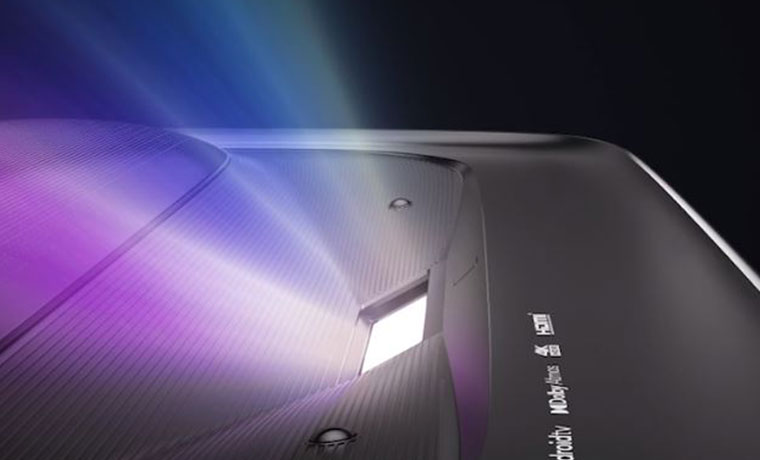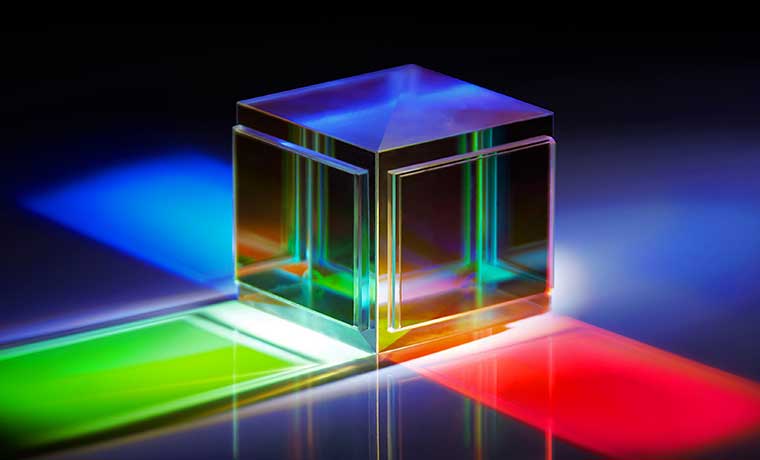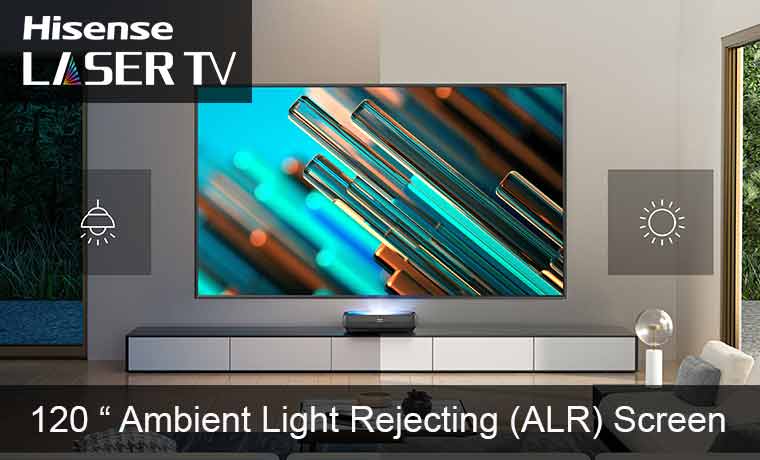Epson Home Cinema 5020UB - Projector Screen - Cave / Home Theater
Dedicated Home Theaters' (or close) common attributes: medium to (ideally) very dark surfaces, all window lighting under control, basically full control of other lighting. But rooms with truly low amounts of ambient light fit in this group, be they home theaters or just darker rooms, or "the cave."
Put an Epson Home Cinema 5020UB or UBE in such a room, the next question becomes how big is the screen, and the third - how far back is the projector mounted (in terms of zoom range). Let me point out that lens placed in full telephoto as it might be on a rear shelf, will deliver only about 60% the brightness than if you place the projector at its closest to the screen.
If you aren't placing the Home Cinema 5020UB projector at the extremes of its lens throw, then you should have between 500 and 700 calibrated lumens. That's going to allow for typical screens up to about 125" diagonal. But this Epson has a number of brighter, and much brighter modes. You can count on about 1400 lumens that still look rather good and 1800+ that's passable, which you won't need in your theater, except for 3D.
I'm talking about a 1.0 gain screens up to say 110" diagonal, and with a 1.3 gain screen roughly 133" diagonal, if you are at or closer than mid-point on the zoom. Keep in mind lamps dim over time.
In Dynamic or Livingroom mode, you'll have tons of brightness, you'll be able to provide some ambient lighting, let's say you're watching sports. If your room is theater like, life should be wonderful.
If you want intentional side lighting in your room (ie. sconces) or have blacked out windows that you want to open a bit for non-movies, you may have enough lumens with a white screen like the Stewart Studiotek 130 (1.3) and Carada Brilliant White (1.4) screens that are my primaries.
But, if you plan to spend a lot of time with side ambient light, you will maintain much better blacks going with a high contrast gray screen, as they tend to "reject" a lot of the side ambient light. Then consider HC gray screens like the Stewart Firehawk, Da-lite HC Cinema Vision, etc. Elite makes a nice light gray surface that has some side rejection, but is also a bit brighter than most HC gray projector screens. If you are going small screen (110" or less), you might choose a darker HC gray screen like the Grayhawk or HC-Da-Mat. The downside to those darker screens is for 3D, where brightness is relatively scarce.
On the other hand, don't forget to consider your 3D viewing. We'll discuss how 3D demands might alter your best choices.
Don't have, or want a theater or cave? Let's talk Family room, living room, bonus room, rooms more typical.
Epson Home Cinema 5020UB - Projector Screen - Family Room
Walls are lighter, or even light - off white. Ceilings and floors also brighter. Even for movie viewing, the reflected light of your image off the screen will bounce around and eventually, a noticeable amount will reflect back onto the screen. Contrast will diminish, but - an important but: Projectors with better black levels will still always look better than those without, until that point where either is significantly washed out. Such is life. There are some things you can do about that.
I occasionally like to drop in this section below, images from my old great room/theater, (before/after). This may help you get a some good idea of what different rooms and lighting
First image below taken using 128" screen, an old (2007) Sony VW60. A projector that we measured at a max of under 700 lumens. This room at that time, was football during the day, everything else, at night only. (My other room was far darker.)
The second image - same setup, the old Epson 1080UB - several generation forerunner to the 5020 and twice as bright as the Sony. Now consider the Epson 5020 is roughly 3 times as bright in Dynamic mode. That is the Firehawk screen in the picture. It looked far better straight back, with most of that light from the doors not reflected.
My presumption is, you care about good movie performance and having good blacks since you are considering, or own this projector. Rooms with a fair amount of light are often just fine for almost all HDTV and definitely sports. They won't be significantly impacted by reflected light from the original image.
The third image shows the difference after darkening the ceiling, and taking the walls to a dark rust color: Even with the door shades partially open, the JVC used in this picture had about the same brightness as the Sony in the first image. The moral to the story - darker walls can easily offset having fewer lumens.
I loved having that Stewart Firehawk G3 (in the images above) in my last home for handling a light surfaced room. It was 128" diagonal in a room with a cathedral celing. When I started out there, all the walls were off white, as was the ceiling, and the carpet was gold. Lots of windows, which I covered with pleated shades - but with no channels. The Firehawk allowed me to have a good picture even with a moderate amount of light ("can read a newspaper bright").
That HC gray screen rejects most of the side lighting. This allowed me to even have my side window shades open a few inches on sunny days, and still have a large, great football image. If your ambient is coming from straight back near the projector, like rear windows, the HC gray won't help you.
Ultimately, though, an HC gray is going to be the best choice for most folks with lighter rooms, and especially if the lights are on the sides. Consider especially the Firehawk G3, and the various Screen Innovations Black Diamond screens (different gains, etc.) which are especially good, but also relatively pricey. Also: Elite's HC Gray, Da-lite's HC-Da-Mat, and so on. Typically we're talking screens with gains of 0.8 to 1.1 gain. It's viable to trade a little brightness for some ambient light rejection,. (Note HC screens also tend to be a touch darker in the corners/sides than a 1.0 gain white.)
Don't get me wrong, you can go with a standard white surface, but in a light surfaced room, you'll also appreciate the gray surface's ability to lower the overall black levels, although with the Epson that's not much of a problem, as it inherently has excellent black levels.




